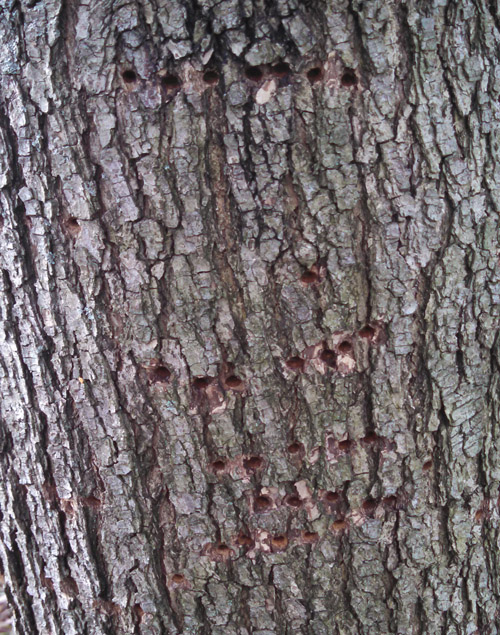Meet Mike in Chantilly soon
Mike will appear at the Capital Remodel & Garden Show at the Dulles Expo Center in Chantilly, Friday, Feb. 27 through Sunday, March 2. Special deal! Enter promo code “McGrath” to get $4 off online tickets.
Last minute V-Day tips for forgetful men
Happy Valentine’s Day!
If that phrase just sent a cold chill down your memory-impaired spine, fear not! You probably can’t get a dinner reservation at a McDonald’s at this point, but you can probably arrange to pick up some very nice takeout from a fancy restaurant if you call them now.
Then get a nice card (This is not the season for the humor section!) and several potted red tulips. There should still be some nice tulips around in grocery stores and florist shops. Then, write inside the card that red tulips mean “I love you” in the floral code — the ancient language of flowers. (It’s true. She can look it up!)
If tulips won’t fly, try dinner, a card and a nice orchid instead. Look for an easy-care moth orchid with a lot of unopened buds on the stem. Be sure to keep it warm on the way home. (You’ll find lots more details on orchid selection in last week’s Garden Plot.)
Turn bouquet roses into live plants
Did you spring for the traditional Valentine’s Day bouquet of roses? You can make that investment grow by turning a few of those cut posies into live plants. Really!
Take about half the bouquet and cut the flowers off leaving about 4 inches of stem still attached to the base of the flower. Then display the cut flowers in a glass bowl filled with marbles and water. (Yes, you must remove the flowers for this to work.)
Then remove all the leaves from the bottom half of the remaining cut stems and sit them in a vase of water while you get the rest together.
Fill a plastic pot that has good drainage holes about halfway up with a nice, light, soil-free mix (available at garden centers, many of which will be open today). Slowly saturate the mix by sitting the pot in water for an hour. Then cut 1 inch off the bottom of the canes and gently position three or four of them in the pot, filling in around them with moist soil-free mix. (Don’t jam them in!)
Resoak the pot, let it drain and place it in a warm room out of direct sun. Place a plastic bag loosely over top (maybe supported by something like chopsticks). Then, lift the bag and mist the canes. Keep the soil moist. Mist those canes every day, and be patient. If you see new growth, roots are developing. Take the bag off, keep misting, cut back on the watering and send me an email for further directions.
Indoor flowers for free
Do you have spring blooming trees and shrubs in your landscape? Now’s the perfect time to force some of their branches into flowering indoors — a perfect antidote to our upcoming nasty weather.
Forsythia is the easiest. Those tall branches just can’t wait to burst into bright yellow blooms. Use sharp pruners to trim off sections 2 to 3 feet long, bring them inside, soak them in lukewarm water for an hour, then recut the bottoms, put them in a vase with lukewarm water and change the water every day. You should have a nice burst of color in about a week.
Fruit tree pruning and free color
Do you have fruit trees in your landscape that require heavy annual pruning, like apple and peach trees? Although their fruits are tasty, these trees demand a lot of attention, beginning with an annual winter thinning of about one-third of the existing branches. This keeps the trees low enough to the ground to easily reach the fruit and opens up the centers for excellent airflow.
Begin this chore now, and you’ll get a nice reward of pre-spring blooms indoors as a bonus. Just bring your prunings inside, recut the bottoms and place them in water-filled vases. Change the water daily and in a week or two you should have a riot of apple and/or peach blossoms brightening up the gloomy days.

Sapsuckers really do suck sap
Don in Waldorf writes: “I have a 12-year-old Bradford pear with multiple horizontal holes on the trunk. I understand the structural issues with Bradfords, especially their tendency toward splitting, but this looks more like a bird or insect is feasting on our tree.”
You are correct, Don. The distinctive little holes lined up in neat rows (shown clearly in the photos attached) are the work of the yellow-bellied sapsucker, a very attractive woodpecker with the very unusual habit of sucking sap the way we would tap maple trees for syrup.
But although their name has adorned many cartoons and comedy routines, their sap sucking is no joke. The birds’ drilling can cause severe damage to a tree, and you are advised to immediately wrap burlap around the affected area to prevent further incursions.
In fact, it might be wise to extend the burlap well above and below the affected area. And maybe hang suet feeders nearby to give the woodpeckers an alternate source of winter food.







